
25 Days

Nepal

Hard

6,812 m

AUD 9,899
Nepal, home to the legendary Mount Everest, is a dream destination for those seeking their first high-altitude mountaineering adventure. Known for its stunning Himalayan landscapes and the warm hospitality of the Sherpa community, it offers an incredible opportunity to experience the excitement of trekking and climbing in one of the world’s most breathtaking locations.
For those eager to challenge themselves, Ama Dablam is a must-do for any serious mountaineer. Located in the Khumbu Valley, the climb takes you through remote villages, lush forests, and dramatic valleys. Along the way, you will encounter welcoming Sherpas, immerse yourself in their vibrant culture, and be awestruck by the towering peaks. Known for its unique pyramid shape, Ama Dablam is one of the most beautiful and challenging mountains to climb. At 6,812 meters, it is lower than Everest but has earned legendary status due to its steep, imposing summit. The hanging glacier on its southwest face resembles the sacred ornament box (Dablam) worn by Sherpa women, giving the mountain its name.
Climbing Ama Dablam is a serious challenge, requiring both physical strength and mental resilience. The South-West Ridge route, with its steep ice and rock, demands advanced climbing skills and stamina. Previous climbing experience is essential for this ascent.
Reaching the summit of Ama Dablam is a monumental achievement. The technical nature of the climb and the effort involved make it an unforgettable experience. From the top, you will enjoy unparalleled views of the Himalayas, with Ama Dablam’s distinctive pyramid shape standing tall. This is a true test of your mountaineering spirit and endurance. For those who succeed, the rewards are immense, leaving you with unforgettable memories from one of the world’s most iconic climbs.
Welcome to Kathmandu! Upon arrival, you’ll be transferred to your hotel. This day is essential for acclimatizing to the new environment. Enjoy a warm introduction to our team and a brief on the expedition ahead. Kathmandu, at an elevation of 1,400 meters, offers a vibrant blend of cultural heritage and modern amenities, setting the perfect stage for the adventure that lies ahead.
Today involves a critical briefing at the Department of Tourism, where you’ll be acquainted with the expedition’s legalities and safety measures. Post briefing, embark on a sightseeing tour of Kathmandu’s historical and cultural landmarks, including UNESCO World Heritage Sites like the Pashupatinath Temple and Boudhanath Stupa. This cultural immersion is vital for understanding the region’s heritage.
An early morning flight to Lukla, known as the gateway to Everest, offers breathtaking views of the Himalayas. The trek to Phakding is a gentle start, introducing you to the local Sherpa culture. The trail, surrounded by green landscapes and distant snowy peaks, covers a descent to 2,652 meters, easing your acclimatization process.
The trek to Namche Bazaar, the commercial hub of the Khumbu region, is a mix of uphill and flat terrain. As you ascend to 3,440 meters, enjoy stunning views of the Dudh Koshi River and glimpses of Mt. Everest. Namche Bazaar is a bustling town with shops, cafes, and a warm local community, making it a comforting stopover.
A crucial day for acclimatization in Namche Bazaar. We will go on a short hike to Everest View Hotel, offering panoramic views of the Everest range. You can also explore the streets of Namche in the evening. This day helps your body adapt to the altitude, increasing your chances of a successful summit. Enjoy the vibrant Sherpa culture and hospitality that Namche offers.
The trek to Tengboche, at 3,860 meters, is a scenic journey through rhododendron forests with magnificent views of the Himalayas. Tengboche Monastery, the largest in the Khumbu region, is a spiritual center where you can observe Buddhist rituals and gain insight into Sherpa culture. This serene location offers peace and tranquility amidst the mountains.
Today’s trek to Pangboche (3,985 meters) brings you closer to Ama Dablam. The trail offers spectacular views of Ama Dablam and other peaks. Pangboche, a traditional Sherpa village, provides a unique glimpse into the lives of the mountain communities. The village’s ancient monastery is a highlight, rich in history and cultural significance.
Reach the Ama Dablam Base Camp at 4,600 meters, a significant milestone. The base camp is set amidst stunning Himalayan scenery, providing awe-inspiring views of Ama Dablam. This day is about preparing for the climb ahead, with time to rest and adjust to the altitude. The base camp environment is a mix of excitement and anticipation.
Spend these days acclimatizing, engaging in a traditional Sherpa prayer ceremony for blessings, and undergoing climbing training. This period is crucial for your safety and success on the mountain. You’ll learn essential climbing techniques and get accustomed to the climbing gear. The prayer ceremony adds a spiritual dimension to the expedition, seeking goodwill and safe passage.
The core of the expedition, these 11 days are dedicated to ascending Ama Dablam. This period includes navigating through the technical sections of the climb, setting up higher camps, and the final push to the summit. Weather and physical condition play a crucial role in this phase. Climbers experience a mix of challenging climbs, breathtaking landscapes, and the thrill of adventure.
After the exhilarating summit, descend back to Base Camp. This descent is a time to reflect on the achievement and the challenges overcome. The journey back is quicker but demands caution. Reaching the base camp brings a sense of accomplishment and relief. The atmosphere at the base camp is celebratory, with climbers sharing their experiences and savoring their achievement.
Fly back to Kathmandu from Lukla, marking the end of the mountain journey. This day is about relaxation and recovery. Back in Kathmandu, you can enjoy the comforts of the city, reflecting on the journey and celebrating the successful expedition.
Your remarkable journey comes to an end as you prepare for your departure. This day is a time for farewells, taking with you memories of an extraordinary adventure and the majesty of Ama Dablam.
Kathmandu Arrival (1,400m) – Gateway to the Himalayas
Welcome to Kathmandu! Upon arrival, you’ll be transferred to your hotel. This day is essential for acclimatizing to the new environment. Enjoy a warm introduction to our team and a brief on the expedition ahead. Kathmandu, at an elevation of 1,400 meters, offers a vibrant blend of cultural heritage and modern amenities, setting the perfect stage for the adventure that lies ahead.
Kathmandu Exploration and Briefing – Cultural Immersion
Today involves a critical briefing at the Department of Tourism, where you’ll be acquainted with the expedition’s legalities and safety measures. Post briefing, embark on a sightseeing tour of Kathmandu’s historical and cultural landmarks, including UNESCO World Heritage Sites like the Pashupatinath Temple and Boudhanath Stupa. This cultural immersion is vital for understanding the region’s heritage.
Flight to Lukla (2,827m) & Trek to Phakding (2,652m) – Journey Begins
An early morning flight to Lukla, known as the gateway to Everest, offers breathtaking views of the Himalayas. The trek to Phakding is a gentle start, introducing you to the local Sherpa culture. The trail, surrounded by green landscapes and distant snowy peaks, covers a descent to 2,652 meters, easing your acclimatization process.
Trek to Namche Bazaar (3,440m) – Heart of the Khumbu Region
The trek to Namche Bazaar, the commercial hub of the Khumbu region, is a mix of uphill and flat terrain. As you ascend to 3,440 meters, enjoy stunning views of the Dudh Koshi River and glimpses of Mt. Everest. Namche Bazaar is a bustling town with shops, cafes, and a warm local community, making it a comforting stopover.
A crucial day for acclimatization in Namche Bazaar. We will go on a short hike to Everest View Hotel, offering panoramic views of the Everest range. You can also explore the streets of Namche in the evening. This day helps your body adapt to the altitude, increasing your chances of a successful summit. Enjoy the vibrant Sherpa culture and hospitality that Namche offers.
Trek to Tengboche (3,860m) – Spiritual Highs
The trek to Tengboche, at 3,860 meters, is a scenic journey through rhododendron forests with magnificent views of the Himalayas. Tengboche Monastery, the largest in the Khumbu region, is a spiritual center where you can observe Buddhist rituals and gain insight into Sherpa culture. This serene location offers peace and tranquility amidst the mountains.
Today’s trek to Pangboche (3,985 meters) brings you closer to Ama Dablam. The trail offers spectacular views of Ama Dablam and other peaks. Pangboche, a traditional Sherpa village, provides a unique glimpse into the lives of the mountain communities. The village’s ancient monastery is a highlight, rich in history and cultural significance.
Ama Dablam Base Camp (4,600m) – At the Mountain’s Foot
Reach the Ama Dablam Base Camp at 4,600 meters, a significant milestone. The base camp is set amidst stunning Himalayan scenery, providing awe-inspiring views of Ama Dablam. This day is about preparing for the climb ahead, with time to rest and adjust to the altitude. The base camp environment is a mix of excitement and anticipation.
Acclimatization and Training at Base Camp (4,600m)
Spend these days acclimatizing, engaging in a traditional Sherpa prayer ceremony for blessings, and undergoing climbing training. This period is crucial for your safety and success on the mountain. You’ll learn essential climbing techniques and get accustomed to the climbing gear. The prayer ceremony adds a spiritual dimension to the expedition, seeking goodwill and safe passage.
Ama Dablam Ascent – The Climbing Challenge
The core of the expedition, these 11 days are dedicated to ascending Ama Dablam. This period includes navigating through the technical sections of the climb, setting up higher camps, and the final push to the summit. Weather and physical condition play a crucial role in this phase. Climbers experience a mix of challenging climbs, breathtaking landscapes, and the thrill of adventure.
Return to Base Camp (4,600m) – A Descent to Reflect
After the exhilarating summit, descend back to Base Camp. This descent is a time to reflect on the achievement and the challenges overcome. The journey back is quicker but demands caution. Reaching the base camp brings a sense of accomplishment and relief. The atmosphere at the base camp is celebratory, with climbers sharing their experiences and savoring their achievement.
Return to Kathmandu – Homeward Bound
Fly back to Kathmandu from Lukla, marking the end of the mountain journey. This day is about relaxation and recovery. Back in Kathmandu, you can enjoy the comforts of the city, reflecting on the journey and celebrating the successful expedition.
Departure from Kathmandu – Farewell to the Mountains
Your remarkable journey comes to an end as you prepare for your departure. This day is a time for farewells, taking with you memories of an extraordinary adventure and the majesty of Ama Dablam.
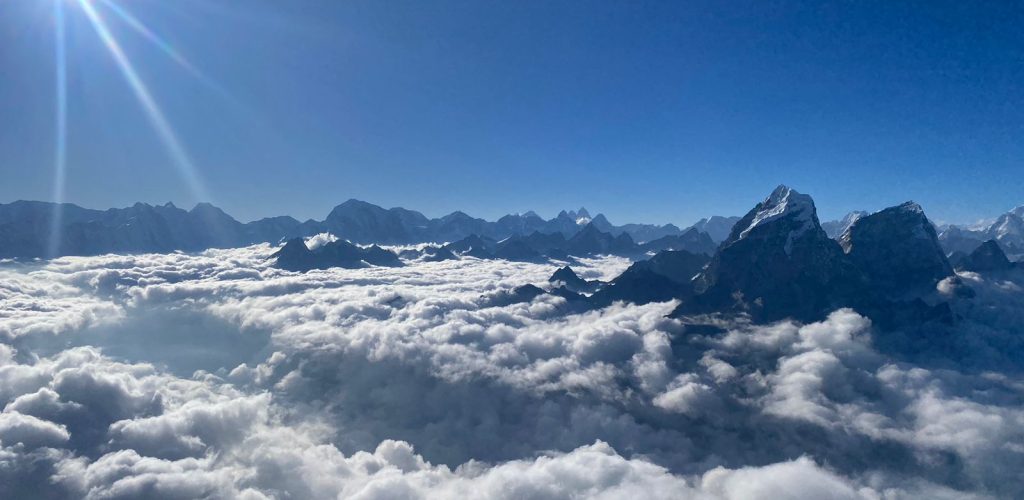
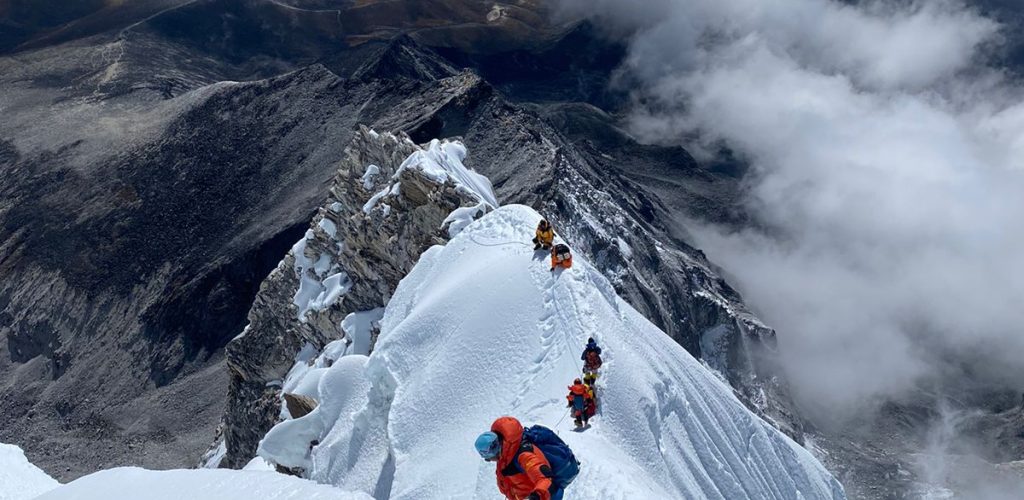
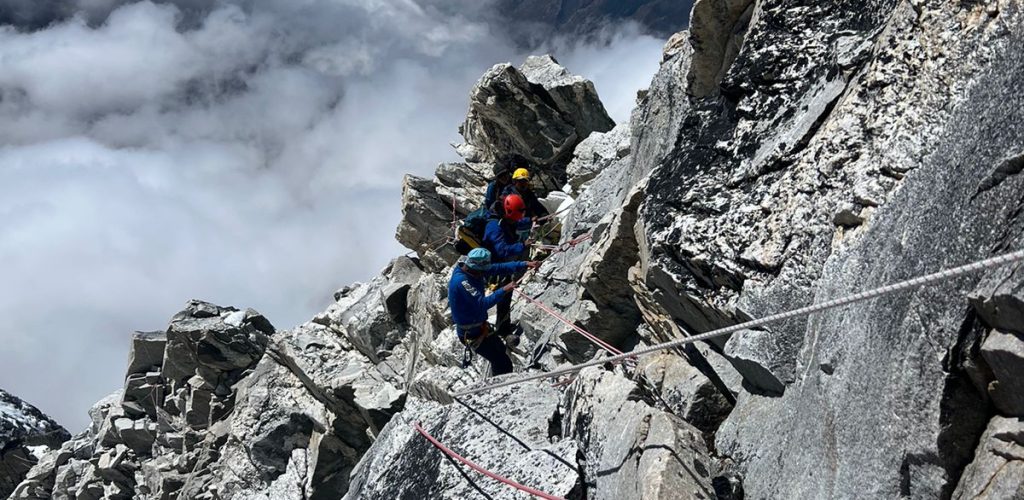
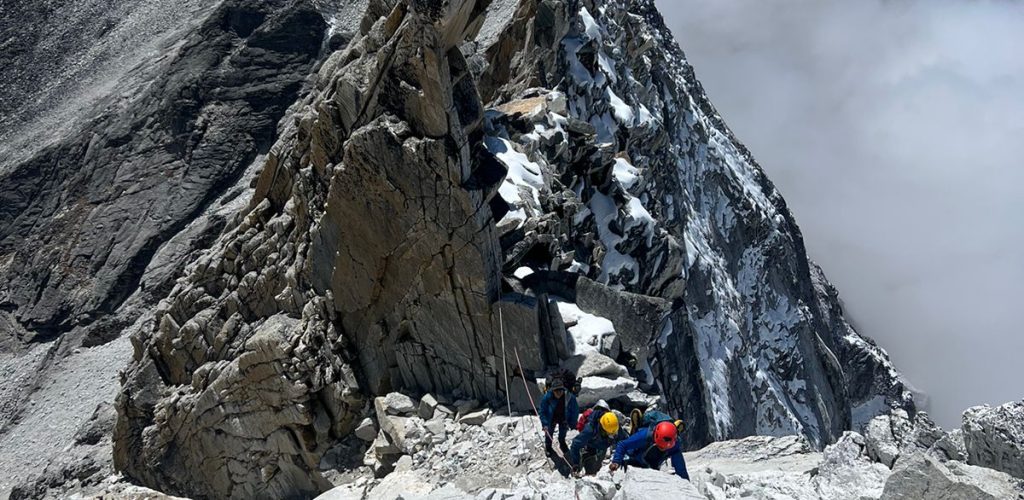
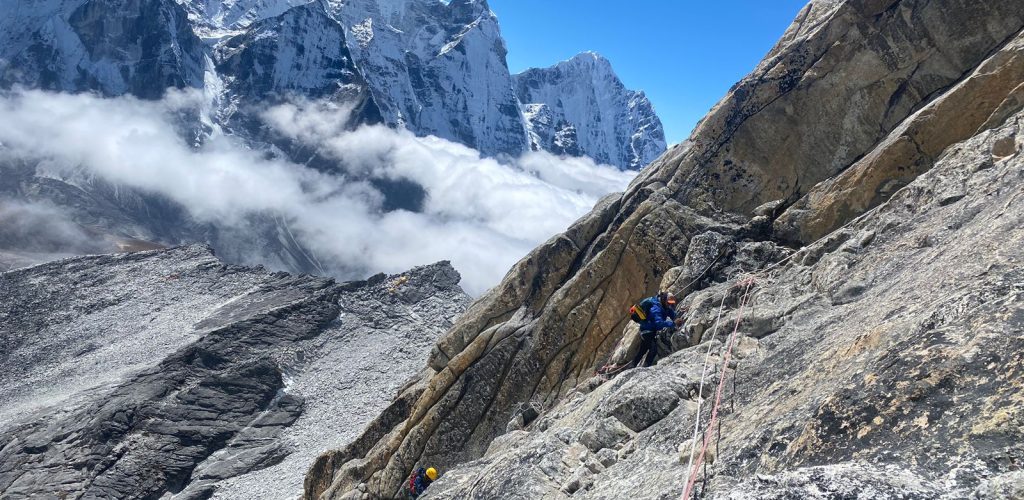
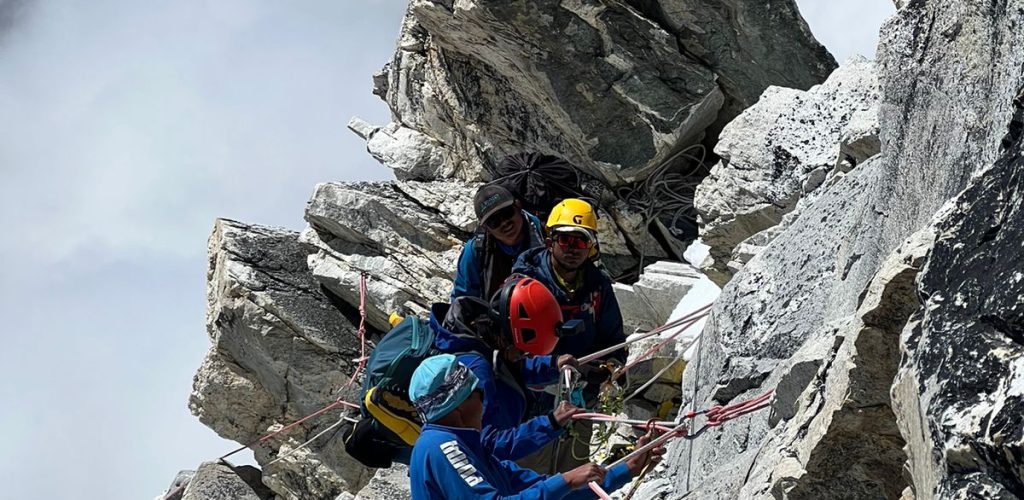
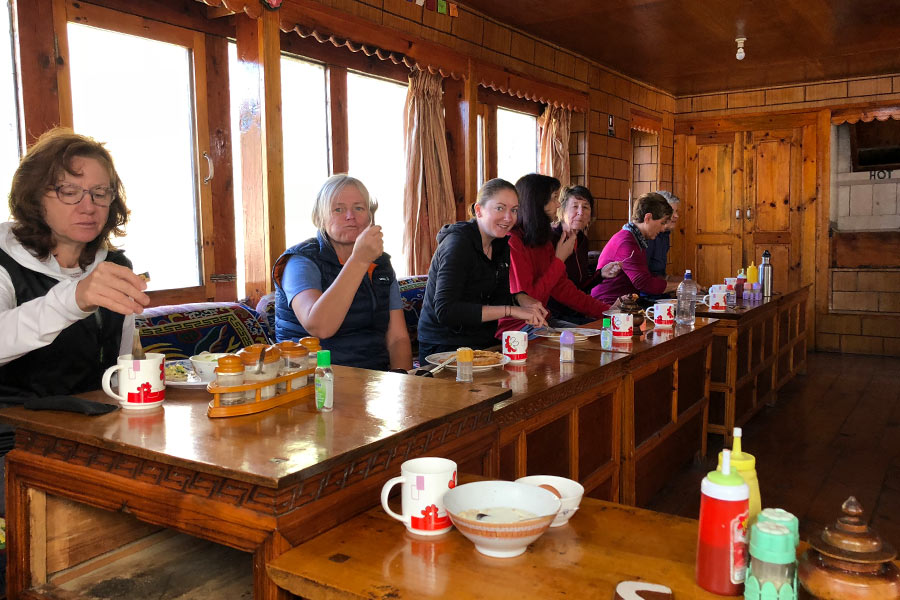
On the Ama Dablam expedition, climbers enjoy a variety of meals designed to provide the necessary nutrition and energy for high-altitude climbing. The food ranges from local Nepalese dishes to international cuisine, catering to diverse palates. Meals are prepared by experienced cooks at base camp, with a focus on hygiene and calorie intake. During the trek to base camp, climbers often stay in teahouses where they can sample traditional Nepalese food. Above base camp, the meals are simpler, consisting mainly of freeze-dried foods, cereals, and energy bars to accommodate the harsh conditions and ease of preparation.
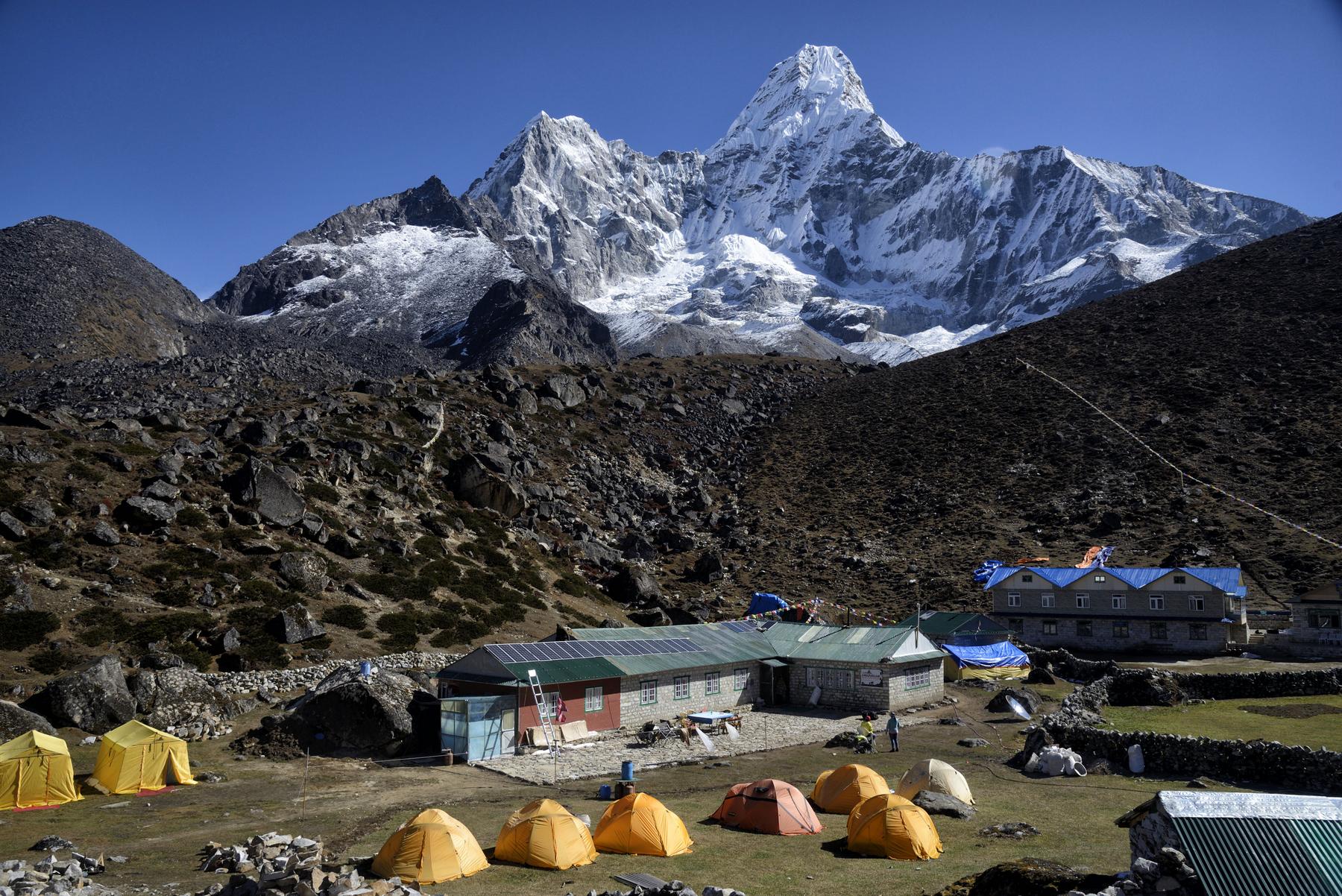
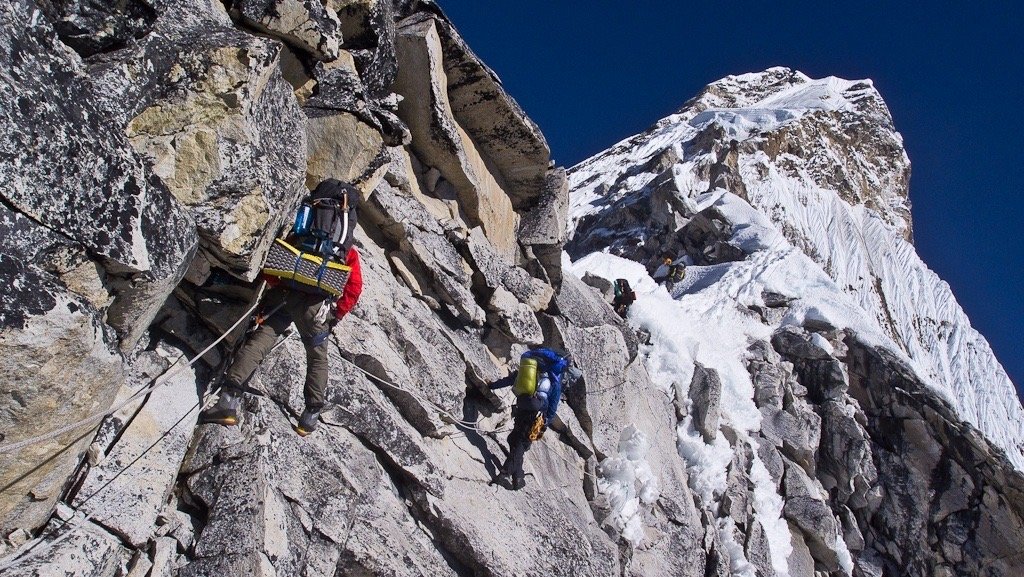
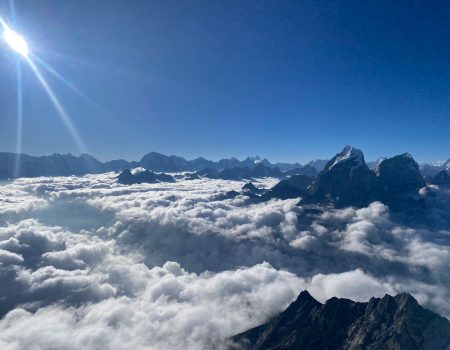
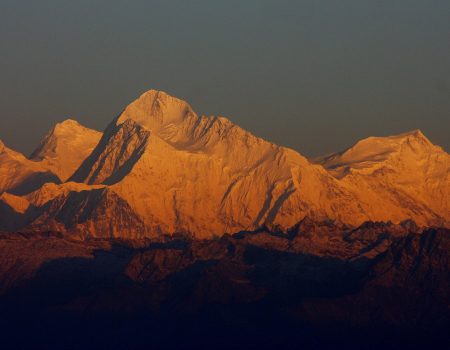
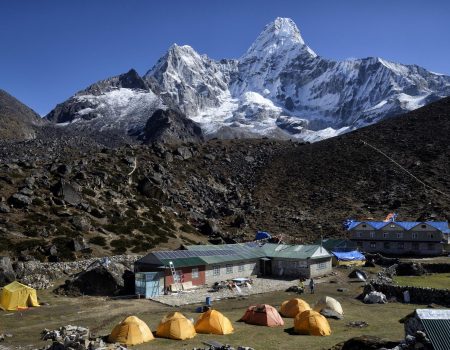
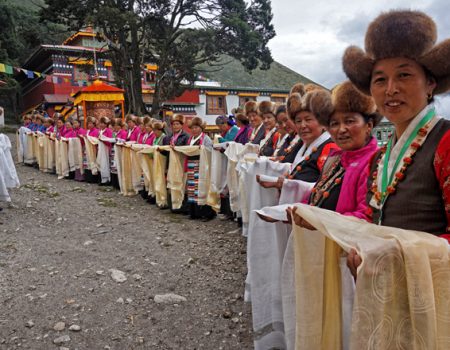
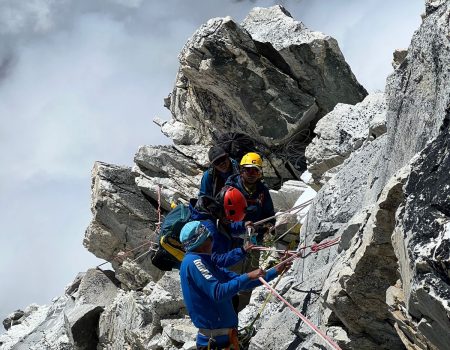

Upper Body:
Lower Body:




At adventure Central, the safety and well-being of our trekkers is our utmost priority, especially for challenging adventures like the Everest Base Camp Trek. We have implemented comprehensive safety measures to ensure a secure and enjoyable experience for all participants:
By implementing these safety measures, Adventure Central is committed to providing a safe, responsible, and unforgettable trekking experience to this trek.
Discover similar treks from Boots & Crampons that quench your thirst for adventure.
We understand your pain when you have to cancel a trip for unforeseen reasons. To address this, while considering our advance arrangements, we’ve set up fair and reasonable cancellation guidelines. If you inform us about it:
A) More than 30 Days Prior to Start:
-Option for a 100% credit towards a future expedition.
-Alternatively, a 90% refund is available.
B) Between 30 to 10 Days Prior to Start:
-Eligible for a 50% refund of the total cost.
-Option to carry forward 75% of the payment towards a future expedition.
C) Less than 10 Days Prior to Start:
-A 10% refund is available under this notice period.
-Alternatively, 25% of the payment can be applied to a future expedition.
Yes, prior experience in high-altitude trekking or climbing, particularly on peaks over 5000 meters, is strongly recommended. This experience helps climbers acclimate to altitude and understand the physical and technical demands of the expedition.
Personal gear, including climbing equipment, proper clothing, and a sleeping bag, must be brought by climbers. We take care of all the other arrangements and common/camping equipment.
Climbing & Trekking Equipment like poles and gloves can be rented, but personal gear like jacket and boots are recommended for comfort and fit.
Appropriate clothing includes a base layer for moisture management, an insulation layer for warmth, and a waterproof and windproof outer layer. Additional accessories like gloves, hats, and thermal socks are essential for protection against the cold. Check out the “things to pack” section above for a complete list.
Accommodations include hotel in Kathmandu, teahouses during the trek through villages like Namche Bazaar, and camping in tents during the climb from the base camp.
Meals are included in the package and are served at teahouses or camps. The food ranges from local Nepalese dishes to more familiar Western-style meals, catering to various dietary preferences.
Clean drinking water is usually available throughout the trek. It’s often provided by the lodges or can be obtained from natural sources and treated with purification tablets or boiling.
Basic facilities are available at campsites, including dry pit toilets or portable toilets, depending on the location.
Mobile network and internet access are limited or non-existent in the region, with emergency communication usually via satellite phone.
Charging facilities are limited on the trek, so it’s advisable to bring extra batteries or portable solar chargers.
A high level of physical fitness is recommended. Participants should be able to hike for several hours a day in steep, high-altitude terrain. Pre-trip fitness training is advised to enhance endurance and strength.
It is highly recommended that climber come with a comprehensive travel insurance that covers high-altitude trekking, medical expenses, and emergency evacuation. It’s important to ensure that the policy covers the specific altitude of Ama Dablam.
The itinerary typically includes acclimatization days to adapt to higher altitudes. Guides are trained to recognize and manage altitude sickness symptoms, and descent is the immediate course of action if symptoms become severe.
Basic medical facilities and support are available at various points along the route. Guides often carry first aid kits, and larger groups may have a designated medical professional.
Expeditions are equipped with emergency evacuation plans, which may involve descent to a lower altitude, helicopter evacuation, or transport to a medical facility, depending on the severity and nature of the emergency.
Safety measures include experienced guides, use of proper equipment, adherence to established routes, and regular weather and condition assessments. Risk management protocols are strictly followed to ensure climber safety.
Climbers should be proficient in basic mountaineering skills, such as using crampons and ropes, navigating crevasses, and understanding glacier travel. These skills are crucial for safe climbing and dealing with the technical sections of the ascent.
Yes, qualified and experienced guides and instructors accompany climbers. They provide assistance with technical skills, route finding, and safety management, ensuring climbers are well-supported throughout the expedition.
During climbing seasons (spring and autumn), the weather is generally stable with less precipitation and clearer skies. However, weather in the Himalayas can be unpredictable, and climbers should be prepared for sudden changes.
Bathing is generally not recommended during the trek.
Weather plays a critical role in climbing conditions. Good weather can mean safer and more enjoyable climbs, while bad weather can lead to hazardous conditions, route changes, or delays.
We have a buffer day in our itinerary to accommodate bad weather or other unforeseen conditions. It is used to ensure the safety and success of the summit attempt.
If a climber cannot continue, the standard procedure involves safely descending with the assistance of guides. The well-being of the individual is prioritized, and decisions are made based on the severity of their condition.
We understand your pain when you have to cancel a trip for unforeseen reasons. To address this, while considering our advance arrangements, we’ve set up fair and reasonable cancellation guidelines. If you inform us about it:
-Option for a 100% credit towards a future expedition.
-Alternatively, a 90% refund is available.
-Eligible for a 50% refund of the total cost.
-Option to carry forward 75% of the payment towards a future expedition.
-A 10% refund is available under this notice period.
-Alternatively, 25% of the payment can be applied to a future expedition.

Fill your full details in the form below. We will get back to you as soon as possible.